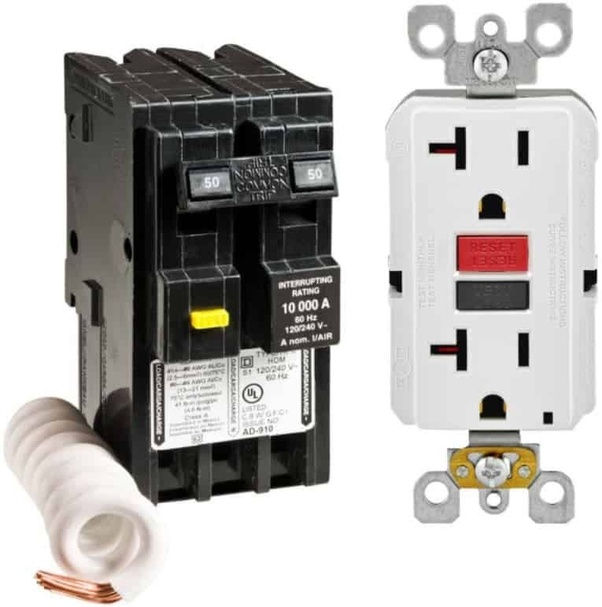AFCI and GFCI Protection Benefits
- Michael Yandolino
- Aug 18, 2024
- 2 min read
Introduction

The presence and functionality of Arc-Fault Circuit Interrupters (AFCIs) and Ground-Fault Circuit Interrupters (GFCIs) were evaluated. Both AFCIs and GFCIs are essential safety devices designed to protect residents from electrical hazards. Below is a summary of their benefits and the significance of their presence in the home.
Arc-Fault Circuit Interrupters (AFCIs)

Purpose and Functionality:
AFCIs are designed to detect and interrupt electrical arcs, which are often precursors to electrical fires. These arcs can occur when electrical wiring is damaged or deteriorated, leading to dangerous conditions. By interrupting the circuit at the first sign of an arc fault, AFCIs can prevent fires before they start.
Benefits:
1) Fire Prevention: AFCIs are highly effective in reducing the risk of electrical fires, particularly in older homes where wiring may have degraded over time.
2) Enhanced Safety: By monitoring the electrical circuits continuously, AFCIs offer an extra layer of protection that standard circuit breakers cannot provide.
3) Code Compliance: The installation of AFCIs is often required by modern electrical codes in specific areas of the home, such as bedrooms. This not only ensures safety but also compliance with current building standards.
Ground-Fault Circuit Interrupters (GFCIs)

Purpose and Functionality:
GFCIs are designed to protect individuals from electric shock by detecting ground faults. A ground fault occurs when electricity escapes from the intended circuit and finds an unintended path to the ground, which could be through a person. GFCIs quickly shut off the power when such a fault is detected, preventing serious injury or death.
Benefits:
1) Protection Against Shock: GFCIs are essential in areas where water and electricity may come into contact, such as kitchens, bathrooms, garages, and outdoor areas. They are crucial in preventing potentially fatal electric shocks.
2) Water Hazard Mitigation: By cutting power almost instantaneously during a ground fault, GFCIs protect residents from the dangers associated with water-related electrical hazards.
3) Code Compliance: Similar to AFCIs, the installation of GFCIs is mandated by building codes in specific locations within the home. This compliance not only enhances safety but also ensures the property meets current regulatory standards.
Conclusion:
The presence of both AFCI and GFCI protection in the home greatly enhances overall electrical safety. AFCIs provide crucial protection against the risk of electrical fires, while GFCIs protect residents from the dangers of electric shock, particularly in areas with potential water exposure. Ensuring that these devices are properly installed and functioning is essential for maintaining a safe living environment.
Recommendations:
Regularly test both AFCIs and GFCIs to ensure they are functioning correctly.
Consider upgrading any circuits that lack AFCI or GFCI protection, particularly in high-risk areas.
For any areas that do not currently meet code requirements for AFCI or GFCI protection, it is advised to consult a licensed electrician to discuss
options for compliance and enhanced safety.

Comments